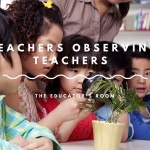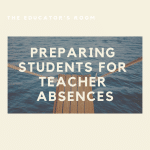At the beginning of this year, I noticed a boy who is in one of the homerooms I work closely with. Stationed at the end of a hall to watch students as they come in, near his room, I would see him approach. Head down, eyes down, every day; a look on his face that seemed unhappy, withdrawn, not so willing to connect. He was a nice enough kid, I was told, just quiet and not really all that interactive. Now I understand personality types very well, as well as the need for some people to communicate in ways that seem unconventional. If you aren’t trained and/or experienced enough to spot it, you might not even be able to tell that they are communicating or what it is that is being communicate.
Demands for a child to “Look at me when I’m talking to you” will be entirely counterproductive with some children. Biologically (instinctively), direct eye contact can be received as aggression or carry with it the potential of aggression if trust hasn’t been established. This boy, with his eyes down most of the time, might not have established that type of trust with most of the school environment and the people in it.
So one day, about a month into school, I walked up to him. He was getting directions from his teacher for the day, and I pretended it was her I wanted to talk to, but had her introduce us. I offered my hand and he gave the briefest of glances up towards my chest and quickest/weakest of handshakes as I repeated his name and told him mine. For the month following that, I would catch him in the room or in the hall and give a quick greeting handshake which he did willingly-but in a way that seemed semi-reluctant. About a month after that, I stepped up the handshake game a little. I could tell he’d grown to expect and appreciate my handshake (slight grin, no eye contact)-so we moved to the multi-step“cool” handshake: standard grip-Man grip-fingertip-slap/slap…with me going “yeah, yeah, yeah” like I was just the coolest thing ever.
He was not real adept with it and I was basically carrying the handshake-guiding his hand through it while behaving as if everyone around us must just know that we are the cool guys in school. Now, I actually know I’m not the coolest thing ever. Heck, I’m barely a blip on the cool radar. But it was super-cool to see this sullen looking and silent boy (I still don’t know what his voice sounds like) kind of grin as he and I fumbled our way through an attempt at a “cool” handshake. This went on for quite a while, and we had moved up to a handshake almost every time we bumped into each other.
About three weeks ago, I was at my morning station and the colleague stationed with me says “Dan, look…” Way down the hall, the boy had spotted me, and was approaching with his hand raised, looking right at me with a smile on his face-a “You know what I’m coming for” look. Now the handshake has turned into a “who-spots-who first” game, and a couple of his classmates have decided that they need a handshake as well. It has also extended to include a little twinkle fingers wave and magical “deedleleedleleedle” sound effect at the end-and he’s sorta doing it! I haven’t heard him speak yet (I know he does, from teachers who work more closely with him), but before we go on spring break, his “homework” will include teaching someone at home the handshake and telling me who he taught when he returns. He’s not in my homeroom, he doesn’t receive intervention services from me, but I believe I can make a difference with him-so I do.
But to reach or teach the vast spectrum of unwilling or difficult students takes way more than the simple fun skills I describe in the handshake story. It takes humor, it takes finesse, it takes experience (either in school, out of school in real life- but both is best) dealing with all sorts of people in all sorts of moods, in all sorts of places. It takes tons of patience and a level head, and it takes being unflappable in the most flappy situations. It requires being able to think quickly, and in some situations-super-quick. Honestly, the same techniques used with drunken, brain damaged, combative adults can work with uncooperative and even angry children. This is more a statement about drunken and irrational adults, by the way.
The anger that children experience can’t really be blamed on them, even though it still needs to be addressed, is unacceptable in and incompatible with a productive learning environment (more on this in a moment). Teachers need to know how to save a lesson, salvage a day, and sometimes mentally switch up plans in their heads, on a dime, while still being in control and having an idea of how you will bring your entire group around to where you will need them to be. To deal with boys like the one I opened this piece with is almost nothing-it is intuitive and fun for me. It is second-nature and I get interactions and reactions from some of the most unwilling students and for years have heard “We put him/her with you because we knew you could work with him/her”.
[fusion_builder_container hundred_percent=”yes” overflow=”visible”][fusion_builder_row][fusion_builder_column type=”1_1″ background_position=”left top” background_color=”” border_size=”” border_color=”” border_style=”solid” spacing=”yes” background_image=”” background_repeat=”no-repeat” padding=”” margin_top=”0px” margin_bottom=”0px” class=”” id=”” animation_type=”” animation_speed=”0.3″ animation_direction=”left” hide_on_mobile=”no” center_content=”no” min_height=”none”][bctt tweet=” They can empty classrooms with their desk-tossing, chair-throwing outbursts-and I’m talking first and second graders” username=”EducatorsRoom”]
Well, yes I can…but boy, the tools that come out of the toolbox can’t always be handshakes, humor and smiles. Today’s students aren’t just more introverted and hard to energize these-they can be volatile and violent. They can empty classrooms with their desk-tossing, chair-throwing outbursts-and I’m talking first and second graders. They can stall lessons for themselves and their classmates with their defiance. Sometimes they can even frighten classmates and adults in ways that extend to outside in the community. Our staff development for the last few years has included in-service on the prevalence of meth amphetamine in our area and how we can spot the ripples in the children we teach in our schools. Seems the poverty, rural landscape, and proximity to I-81 makes it a magnet for such activity.
If you are a real, traditional schools-type teacher in an area impacted by poverty, you have real stories to tell just like mine-maybe even worse. Yes, even in my rural small-schools world, there is crime, there is violence, and there are drugs-all of which comes with an aftermath impacting family influence/involvement and student buy-in/achievement. In urban areas, with populations and concerns more dense and concentrated, there is a greater need for schools that are more orderly and safe. I have seen news report that lead me to wonder what teachers in really challenging situations do. Remember the boys on that Florida school bus who joined together to beat down that one younger child sitting in his seat? Seems that the older boys were dealing drugs and the younger one had threatened to tell someone. Did they not know there was a camera on the bus? Did they not care? What is it like to be a responsible student in a school where everyone knows violent students like this are roaming the halls? What challenges do they bring to their teachers and what tools do those teachers use?
While our world has not yet turned into a post-apocalyptic wasteland and survival free-for-all, stories like this are becoming more common. Children should not be a danger, or be in danger because of their behaviors-but they are. Committing assaults and robberies, or playing absurdly violent, sociopathic games like “knockout” just for fun.
Now, I know that these are the extremes, but my point is that they are only a few examples of stories becoming more common, they involve school children, and these children are in schools with other children who know them and what they are capable of. The adults in their schools likely know and experience it as well, and have to use whatever tools they have to manage learning for the entire group. But if you follow the promotional juggernaut that precedes, surrounds, and then seeks to cover the wake of destruction of many of self-absorbed charter, magnet, “choice” school leaders…you know they deny or avoid the existence of stories like this and that it’s not them that will take on these most challenging students. They like to call traditional schools “failing”, boast their comparative results and describe the number of kids they lift to proficiency on standardized tests, or the percentages of those graduating and going on to college, but what they don’t really describe is that those results might be due as much to design (separation/segregation) than effort. They are running “choice” schools that rely on luring away the most ready while leaving the most challenging behind for the real teachers. But students truly are more challenging, and that can’t be denied.
So who’s stepping up to that challenge? I have had exchanges with “reform” advocates who are really fighting for better opportunities and more choice for parents and students, and I love that they have that goal. I love when adults fight for better outcomes for students. The problem is that the blame and shame game is often all they have (failing schools, bad teachers avoiding accountability, privileged suburban parents…) and it’s really a loser of an argument for them. Instead of demanding a strengthening of the social conditions and supports that will strengthen communities and families and then lead to better outcomes for all-they promote the test/demean/diminish/divide and conquer market. I have pointed out that the real dedication, the real willingness, and the real heroes are the teachers who continually try to reach into their toolbox to work with the most challenging students in the most challenging settings.
I know I am pretty fortunate to be working on the lighter end of that challenge, although I find myself needing a larger “toolbox” these days, but when I even dare to suggest that challenging students exist, I often get one of those measured and disingenuous (or otherwise ignorant of the truth) responses:
“Is that really how you feel about the children you teach, Dan?”
Well…it would be a skewed opinion, because it would come from me. Instead, ask the children I teach how I feel about them.
I have fallen behind on my writing and will be playing catch up, but I would love to see any writing from teachers who deal with the type of serious and sometimes dangerous challenges I described. Is it my imagination? Do these 11 to 17 year old students exist only in the news and not in our schools? If they are in your room, what do you do?
 [/fusion_builder_column][/fusion_builder_row][/fusion_builder_container]
[/fusion_builder_column][/fusion_builder_row][/fusion_builder_container]






